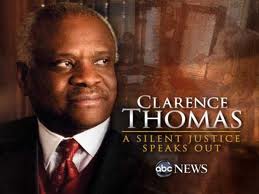Does America Want More Immersion in Race Warfare–or Colorblindness?
 Those who profit from race in terms of money, power, or careers will not welcome the concept of colorblindness. As I recently wrote, “To me that means that you don’t take race into consideration when dealing with others. You might notice that your relatives are all different in numerous ways, but you rejoice in their diversity. Being an individual and independent is truly a high form of compliment.”
Those who profit from race in terms of money, power, or careers will not welcome the concept of colorblindness. As I recently wrote, “To me that means that you don’t take race into consideration when dealing with others. You might notice that your relatives are all different in numerous ways, but you rejoice in their diversity. Being an individual and independent is truly a high form of compliment.”
Individuals have the right to celebrate their own families and genealogies and heritage–and all do so. This isn’t inconsistent with the moral principle of colorblindness unless one race is pitted against another: “The colorblind person isn’t preoccupied with race, nor does he attempt to wield it as a social or political weapon. The Nazis may have promoted one race and disparaged another, but whether helping or hurting a particular race, it’s all the same. Race consciousness is affirmed. Just the targets change.”
Chief Justice Roberts has pointed out that “The way to stop discrimination on the basis of race, is to stop discriminating on the basis of race.” Roberts would agree with Wikipedia that “In the 1960s landmark civil rights legislation’s goal was to remove racial discrimination and so establish a race-blind standard,” which cites Martin Luther King, Jr.’s dream that people will be judged by “the content of their character” rather than “the color of their skins.”
Without the principle of colorblindness, the GOP can only squirm and stutter, not knowing how to defend themselves. In a post-election interview, Condoleezza Rice said that the “GOP Needs a Bigger Tent to Win.” But isn’t colorblindness the bigger tent we should have? Or is it 100% predictable that the party will have to nominate a minority for the 2016 campaign?
Colorblindness as a rallying cry has been supported by only a few at this point. Justice Clarence Thomas says that it isn’t popular given the liberal grip on America’s media-defined psyche:
When people used to criticize my grandfather, he’d say: “Well then, dammit, they’ve got a lifetime to get pleased.” That was it. He never spent any more time on it. Have you ever read the Supreme Court case Plessy v. Ferguson from 1896? That’s the case that upheld the idea of “separate but equal.” There was one dissent in that case, the dissent by Justice Harlan, who argued that the Constitution is colorblind. How lonely do you think he was after he wrote that? Do you think he was popular? It doesn’t mean he wasn’t right. I never set out to be unpopular, but popularity isn’t of high value to me. I set out to do my best to be right. I am who I am.
And Constitution scholar Edward J. Ehler in “Is the Constitution Colorblind?” suggests that the Founding Fathers have already told us that colorblindness is the only way to prevent a social meltdown in US race relations:
The Supreme Court only needs to take one short step to do the job that Brown v. Board of Education failed to do. It should declare that the Equal Protection Clause of the Fourteenth Amendment commands a colorblind Constitution which neither knows nor tolerates classes among citizens. Fisher v. Texas should be the case where the Court completes the job. Some years ago, Justice Kennedy—who may provide a key vote in Fisher—wrote that “the moral imperative of racial neutrality is the driving force of the Equal Protection Clause.” I might add that it is the moral imperative of the Equal Protection Clause because it is the moral imperative of the Declaration of Independence.
 Those who profit from race in terms of money, power, or careers will not welcome the concept of colorblindness. As I recently wrote, “To me that means that you don’t take race into consideration when dealing with others. You might notice that your relatives are all different in numerous ways, but you rejoice in their diversity. Being an individual and independent is truly a high form of compliment.”
Those who profit from race in terms of money, power, or careers will not welcome the concept of colorblindness. As I recently wrote, “To me that means that you don’t take race into consideration when dealing with others. You might notice that your relatives are all different in numerous ways, but you rejoice in their diversity. Being an individual and independent is truly a high form of compliment.”
